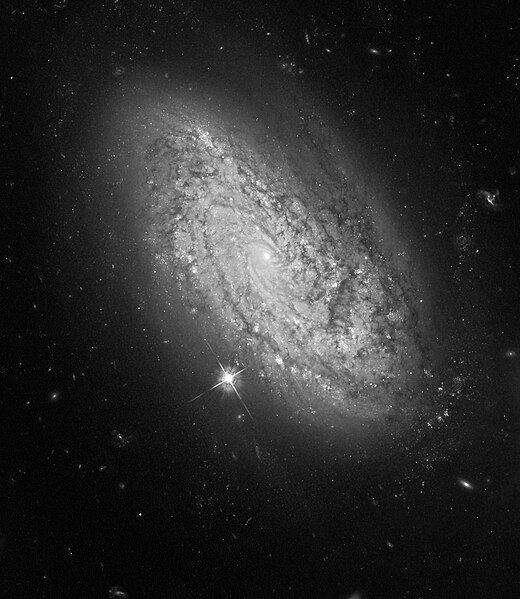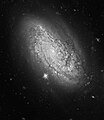Fitxategi:NGC 3021 Hubble.jpg

Aurreikuspen honen neurria: 520 × 599 pixel. Bestelako bereizmenak: 208 × 240 pixel | 416 × 480 pixel | 666 × 768 pixel | 888 × 1.024 pixel | 1.838 × 2.119 pixel.
Bereizmen handikoa ((1.838 × 2.119 pixel, fitxategiaren tamaina: 1,75 MB, MIME mota: image/jpeg))
Fitxategiaren historia
Data/orduan klik egin fitxategiak orduan zuen itxura ikusteko.
| Data/Ordua | Iruditxoa | Neurriak | Erabiltzailea | Iruzkina | |
|---|---|---|---|---|---|
| oraingoa | 01:42, 1 ekaina 2009 |  | 1.838 × 2.119 (1,75 MB) | Friendlystar | {{Information |Description={{en|1=Less than 100 years ago scientists didn't know if the universe was coming or going, literally. It even fooled the great mind of Albert Einstein. He assumed the universe must be static. But to keep the universe from collap |
Irudira dakarten loturak
Hurrengo orrialdeek dute fitxategi honetarako lotura:
Fitxategiaren erabilera orokorra
Hurrengo beste wikiek fitxategi hau darabilte:
- ar.wikipedia.org proiektuan duen erabilera
- arz.wikipedia.org proiektuan duen erabilera
- az.wikipedia.org proiektuan duen erabilera
- be.wikipedia.org proiektuan duen erabilera
- ce.wikipedia.org proiektuan duen erabilera
- diq.wikipedia.org proiektuan duen erabilera
- eo.wikipedia.org proiektuan duen erabilera
- fa.wikipedia.org proiektuan duen erabilera
- hr.wikipedia.org proiektuan duen erabilera
- kk.wikipedia.org proiektuan duen erabilera
- lb.wikipedia.org proiektuan duen erabilera
- mk.wikipedia.org proiektuan duen erabilera
- my.wikipedia.org proiektuan duen erabilera
- nl.wikipedia.org proiektuan duen erabilera
- pt.wikipedia.org proiektuan duen erabilera
- ru.wikipedia.org proiektuan duen erabilera
- sh.wikipedia.org proiektuan duen erabilera
- sk.wikipedia.org proiektuan duen erabilera
- sr.wikipedia.org proiektuan duen erabilera
- tr.wikipedia.org proiektuan duen erabilera
- tt.wikipedia.org proiektuan duen erabilera
- uk.wikipedia.org proiektuan duen erabilera
- uz.wikipedia.org proiektuan duen erabilera
- www.wikidata.org proiektuan duen erabilera



